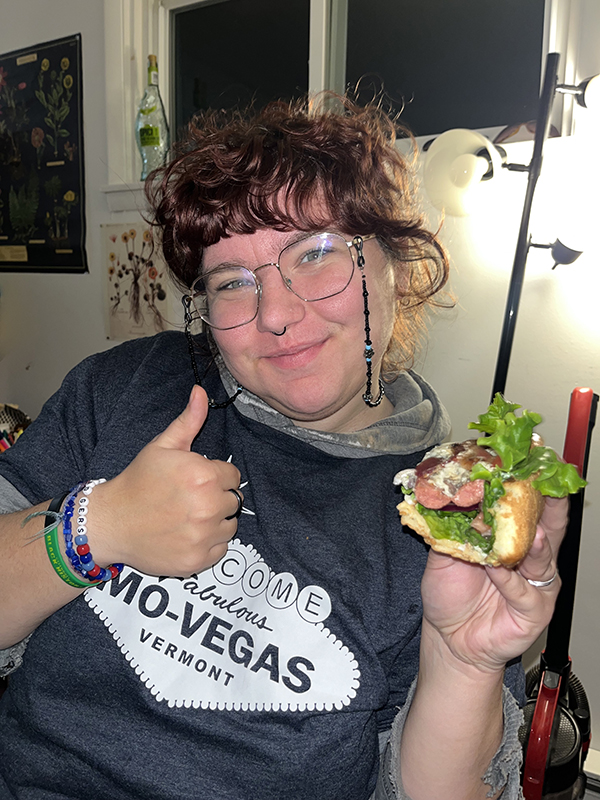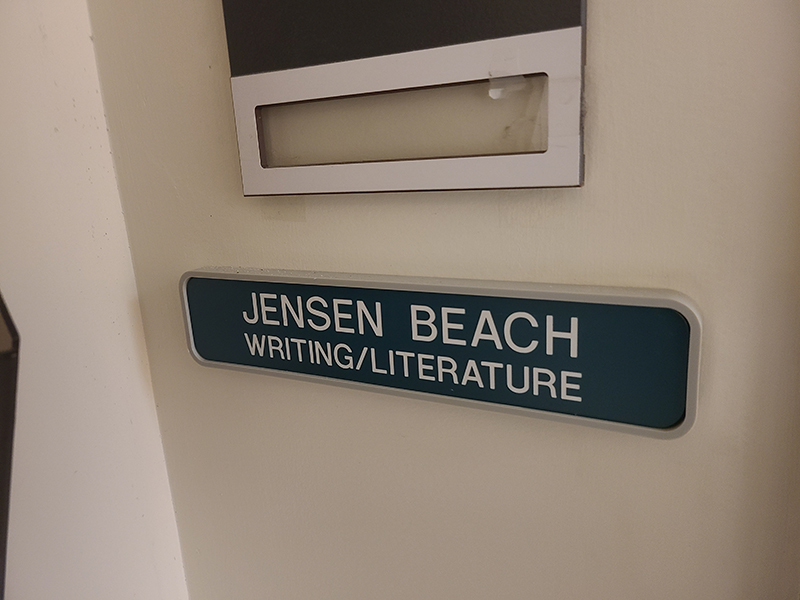Education
Since Optimization 2.0 was proposed on Oct. 2 and 3, students and faculty have been unsure about what will happen to their majors and jobs. Which majors being cut? Which majors be moved to different campuses? What campuses will now have what majors? And how will this affect students and faculty?
Two majors chosen to be “optimized” are Inclusive Childhood Education and Inclusive Adolescent Education.
According to Hannah Miller, associate professor of education at VTSU-Johnson, inclusive childhood education is for people who will get a license and endorsements to teach elementary grades and kindergarten through eighth grade for special education.
The inclusive adolescent education program is for people who will double major in a content area like history, political science, math, writing and literature, art, and science. This will allow people to get endorsements in their content area at a 7-12 level and be on their way to becoming a special educator.
Before Optimization 2.0 was proposed, inclusive childhood education and inclusive adolescent education had already undergone changes. One of those changes was that all inclusive childhood education students across all campuses would using the same pathway for elementary and special education licensure.
With the implementation of Optimization 2.0, there will be even more changes.
“The first draft of Optimization 2.0 did propose to remove all education for Lyndon, except for early childhood education,” Miller said, “So that means that the proposal suggested removing inclusive childhood and inclusive adolescent from the Lyndon campus.”
Other majors being optimized also affect education majors, more specifically the inclusive adolescent major.
For inclusive adolescent education majors, if majors — like performance arts and technology, for example — move campuses, it could affect students going for that secondary degree.
This is not the first time Johnson has undergone optimization.
Miller said when Johnson and Lyndon merged into Northern Vermont University, there was another optimization, which led to faculty downsizing.
“Before unification with Lyndon, Johnson State College had about five full-time faculty members and now we have two,” Miller explained.
Lyndon also only has two full-time faculty in the education department.
The lack of full-time faculty has made it challenging.
“This means we had to rely on part-time faculty to teach our education courses. It means we have a harder time finding people to teach our classes. Sometimes [the classes] are very specialized in ways only full-time faculty can teach them.”
The education department’s solution to their faculty problem has been offering more classes online.
While Miller is happy that the optimization has claimed to want to sustain Johnson’s reputation of being an education school, she believes that they need to invest in the resources that the department needs to grow the program.
“For me, it’s my highest priority that we maintain a commitment to strong teacher education in the state,” Miller said, “Public education is not going away. We currently have a teacher shortage in Vermont, and we have a special educator shortage. I think our programs are good and meeting the needs that the state has.”
Miller said one way the administration could help invest in the department is to help hire more full-time faculty.
“The next step is to invest in the programs, so that we have faculty who are sustainable, who will stay, who can get to know the programs and the students over time, who can build relationships with the school district, and understand the state’s needs. That means full-time faculty that can invest in the institution and build their careers here.”
When it comes to the optimizations, Miller expresses that it’s important that the administration does not make decisions solely based on finances.
Miller said that people should have the opportunity to get degrees in a variety of majors. Liberal arts colleges rely on degrees with larger enrollment like education and business to help other degrees with smaller enrollment. Just because a degree does not have high enrollment, that does not mean it isn’t valuable.
Miller feels like the optimization is making students and faculty feel uncertain.
“It’s hard for me to know how the students feel about what’s going on and I hope that they are okay. I think when decisions are made behind closed doors in a not transparent way it creates a lot of uncertainty in a community, and I think models of decision-making that I have appreciated being a part of the most in my career have been very collaborative and participatory.”
According to Miller, in uncertain times like these, Johnson’s community must stay strong and informed.
Additional majors being affected by Optimization 2.0 are degrees in the English and writing programs.
Art, Humanities and Communications
Under the umbrella of courses with a focus on English, writing, and literature, Optimization 2.0 and the faculty buyouts have impacted Lit and Writing programs across all Vermont State University (VTSU) Campuses. At the start of writing and these interviews, optimization was still in the draft period and the final date for the buyout had not yet been reached.
Andrea Luna, Program Coordinator for the English programs at Lyndon, responded via email. She stated,
“Optimization 2.0 is all about curricular changes, and curricular changes must go through the faculty governance process, although after it does a president can discount the faculty advice. The governance process takes some time, so despite announcements of curriculum changes, they aren’t going to happen overnight.”
The plan calls for a consolidation of the Literature and Writing, and Creative Writing degree programs, but faculty are unsure of what that would look like for the university.
“I think one of the biggest problems with the Optimization 2.0 recommendations is that they’re vague,” said Michael Talbot, the Chair of the Arts, Humanities and Communications Department at Vermont State University.
“They say things like ‘major modifications,’ ‘minor modifications,’ and ‘consolidation,’ but then there’s little explanation of what those things will look like for both the students who are taking courses and the faculty who need to deliver courses.”
The Optimization recommended that the programs “include community-based learning opportunities,” for phase two, but according to faculty, this kind of learning is already a major part of those programs.
“We understand that getting out in the community, experiential learning opportunities, are formative in bridging that gap between the classroom and the workplace,” said Talbot. “Students are workplace ready when they leave.”
Whether it be internships, travel opportunities and conferences, or direct work on campus journals and newspapers, these opportunities have looked slightly different at each campus, but have always been a part of each degree.
Luna stated, “The Green Mountain Review (GMR) is a forty-year-old, award-winning literary magazine, recognized nationally as one of the top literary magazines in the country. I can’t see that any modification is needed, with the exception of re-funding the GMR.”
Despite this, questions raised about whether the university will be able to implement, or continue to implement, “community-based learning” in these areas when funding for such opportunities continues to be taken away. On November 2, GMR announced their cease of publication in a Facebook post that read:
“After 40 glorious years, Green Mountain Review is ceasing publication. Our university has cut all our funding. It’s been a wonderful run. If you and/or your institution have an interest in taking over this publication, please contact…”
The Optimization document also says that additional changes need to be made to “reduce the cost” of the department, but faculty say that this is unnecessary as well.
“I’d say our expenses are definitely in line with other institutions, if not particularly low. The costs for running these programs are purely faculty,” said Talbot.
Luna stated, “The BA and the BFA do not run at a deficit, because the faculty teaching
Performing Arts and Technology + Bachelor of Fine Arts
Optimization 2.0 is moving many majors across VTSU campuses, one of those being Performing Arts and Technology. Additionally, all campuses will lose the Bachelor of Fine Arts degree programs.
Fine arts will still be offered on the Johnson and Castelton campuses, as well as the Master of Fine Arts degree programs. As claimed with every other program being optimized, current students should be able to finish obtaining their BFA degrees. According to the document, fine arts is not a “critical occupation” in Vermont, as there are very few annual openings for jobs in associated feilds. The document also claims that “internal competition from multiple campuses has driven high direct expenditures.”
Performing arts and musical theatre classes will be consolidated to the Castleton campus. According to the optimisation report, fine arts, studio arts, woodworking, performing arts, and musical arts are in a negative gross and net position. The refined report, released at the end of October, recccommends the consolidation of “the Music, Music Educaton, and Theater Arts programs into two programs that share some courses.” Specifics for these programs at all campuses are still undetermined.
Current students had released petitions to attempt to save the programs, but unfortunately, no changes have been made. Many upperclassmen are still fighting for certain courses to continue to be in person in Johnson, as the alternative is to travel hours away to another campus if courses are not offered online, which is a possibility. As a result of these changes, many students have expressed their desire to finish their education at other institutions.



